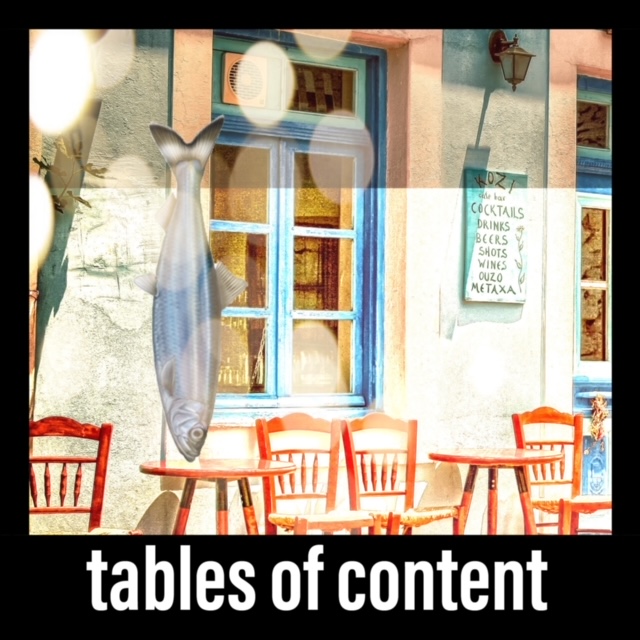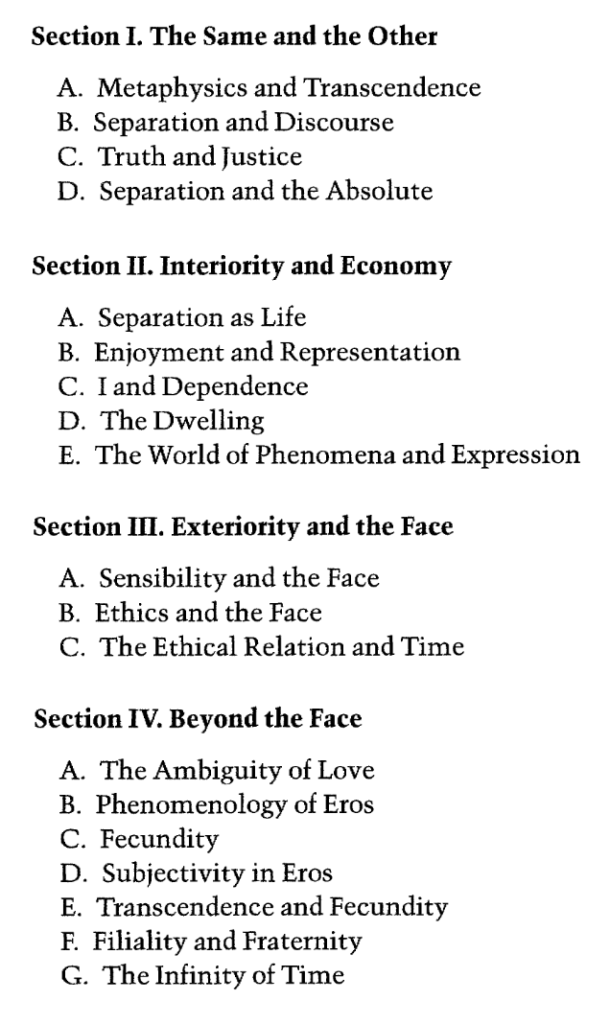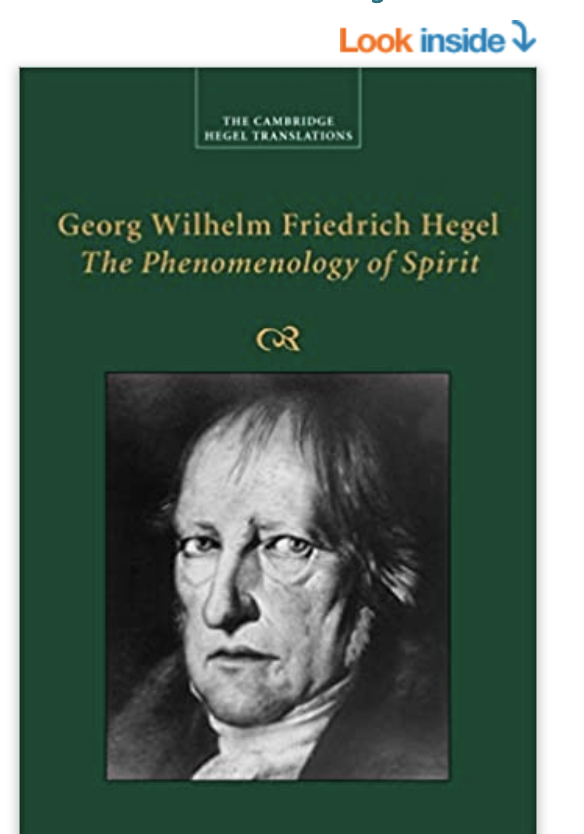
Looking at tables of contents on themes you’re working on can help you organize your own thinking.
For a great example of the organizational prowess of a good TOC, consider Leora Batnitzky’s account (right) of Emmanuel Levinas’ Totality and Infinity TOC (left):

Leora Batnitzky on the structure of Levinas’ TOC (from “Encountering the Modern Subject in Levinas,” Yale French Studies, No. 104, Encounters with Levinas (2004), pp. 6-21) (*outline formatting and boldface is not in the original text but is being added for visual clarity):
“In Section I, “The Same and the Other,” Levinas lays out what will be the argument, to be made in greater detail, in the next three sections.
Section I itself has four parts, which mirror the structure of the book as a whole.
- Part A of Section I, “Metaphysics and Transcendence,” describes the broad arguments that are developed in the next three parts (B-D). In this part, Levinas lays out his general claim: that ethics precedes ontology and that ethics is transcendence.
- The following three parts (B-D) make in short the argument that Levinas will make in the second through fourth sections of the book.
- Part B, “Separation and Discourse,” makes in short the argument of Section II, “Interiority and Economy.”
- Part C, “Truth and Justice,” makes the argument that Section III of the book, “Exteriority and the Face,” will make in greater detail.
- And Part D, “Separation and the Absolute,” introduces the argument that will be made in Section IV, “Beyond the Face.””

Use Amazon’s “Look Inside” feature to ogle TOCs! It can help your research of new topics and it can help inspire clarity about your work’s own aims, parameters, and organizational structures.